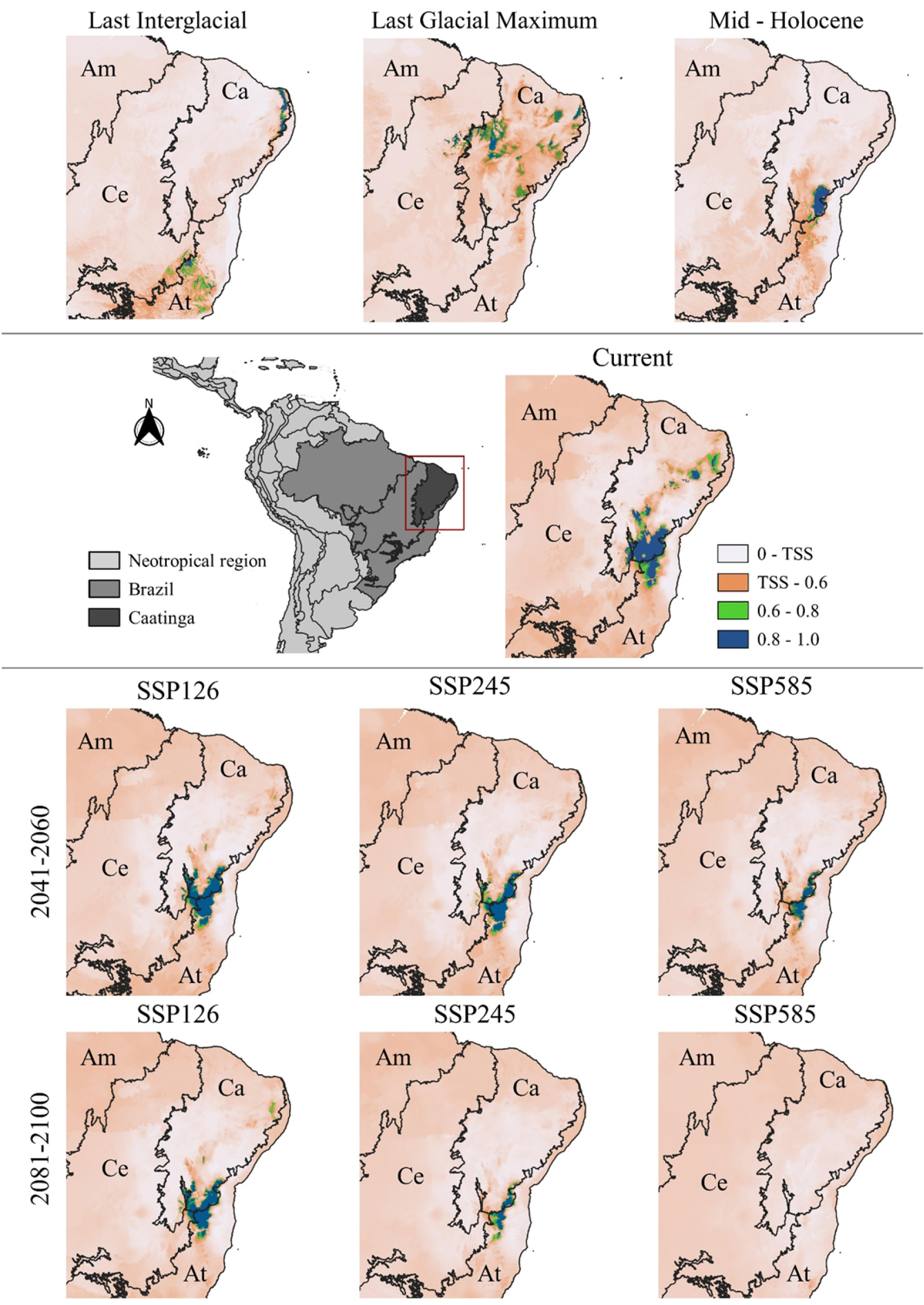
|
||
|
Map zooming in the Caatinga Domain showing the climatic suitability for Holoregmia viscida in current conditions (centre of the figure), paleoclimatic scenarios (top of the figure) and three future climate change scenarios (bottom of the figure). Brazilian phytogeographical domains: Am – Amazon Rainforest; At – Atlantic Rainforest; Ca – Caatinga; Ce – Cerrado. TSS represents the True Skill Statistic, used to define the best model and the threshold value in the model to decide whether a pixel has suitable conditions for the occurrence of the species. SSPs are the Shared Socioeconomic Pathways, which are possible scenarios regarding the future emission of greenhouse gases. The SSP126 is an optimistic scenario that would occur in a sustainable world with low greenhouse gas emissions; SSP245 considers an intermediate level of greenhouse gas emissions; and SSP585 is the most pessimistic scenario and assumes that the use of fossil fuels will continue to increase. |